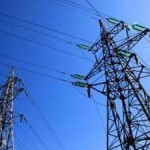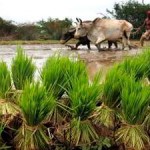
Nairobi – Glance down towards the expanding Olkaria Geothermal Power Station, probably the world’s only energy station in a national park – Hell’s Gate National Park – and giraffes graze close to the fence, seemingly unfazed by the noise and whirr of electricity producing turbines.
Stored in the planet’s crust, geothermal energy is clean, it’s renewable, it can be tapped from around the world and it could be big business in Kenya. The source of Kenya’s pot of energy gold is the Great Rift Valley – a geographical and geological feature running north to south for around 4,000 miles (6,400 kilometres) from northern Syria to central Mozambique in East Africa. Astronauts say it is the most significant physical detail on the planet visible from space. It could also be one of Africa’s most important clean energy sources for the twenty-first century.
Geothermal energy is a century old technology. It is harnessed from underground reservoirs, containing hot rocks (250-350 degrees Celsius) saturated with water and steam. Boreholes of up to 3000 metres are drilled into these reservoirs, whereupon hot water and steam are then piped up to a geothermal power plant and used to drive electric generators to create power.
Kenya is on an ambitious energy trajectory as part of its “Vision 2030” to generate a minimum of 3000 Megawatts in the next twenty years. Geothermal will be a central pillar of this and judging by the expansion plans already underway for a fourth power plant (Olkaria IV) and significant expansion of Olkaria I with units IV and V, expected to be completed by 2012, it could well be on track.
The expansion will bring the output of power from the Olkaria power plant from the current 150 MW up to 430 MW, or almost 40% of Kenya’s annual requirement. Some estimates say that Kenya boasts massive geothermal potential, potentially as high as 7,000 Megawatts. If Kenya continues on the path to achieving its 2030 goals, it could be the first African country to export geothermal energy.
Importance of renewable energy for a Green Economy
It is widely accepted that the most important determinant in making the transition to a Green Economy from the wasteful, polluting and ultimately unsustainable brown economy is energy – where we find it, how we use it, how we recycle it.
The world, as a whole, needs to be more efficient in its use of energy – and needs to develop new, renewable sources if we are to lessen an excessive dependence on the fossil fuels – oil, gas and coal. Expanded use of geothermal power could be one major advance combining economic, social and environmental benefits needed for true sustainable development.
At a continental level, the energy sector in most parts of Africa is characterized by an acute energy crisis due to high oil prices, persistent droughts and unrivalled demand from unprecedented population growth.
In turn, Kenya’s energy scene is dominated by two primary factors; a predominant reliance on dwindling biomass energy resource to meet the energy needs of rural households and heavy dependence on imported petroleum to meet modern economic needs.
“Soon Kenya will be able to meet half of its power requirement through geothermal steam fields. Meanwhile, it has shown all other countries of the African Rift that geothermal power is a competitive, reliable and environment friendly solution,” says Peerke de Bakker, UNEP energy expert, Nairobi, Kenya.
Kenya recognizes geothermal power as one sustainable form of indigenous energy, all this set against a background of diminishing prospects for exploitable large hydropower resources and unstable international hydrocarbon fuel prices.
Where to drill?
In a large landscape with untapped resources deep underground, finding the most productive areas to drill can be a little like throwing a fishing rod into the sea and hoping a large shoal of fish will swim by.
With financial assistance from the Global Environment Fund, UNEP worked with the National Power Generation Utility of Kenya (KenGen) on a Joint Geophysical Imaging for Geothermal Reservoir Assessment project finishing in 2009. The project aimed to reduce the cost of renewable, nearly CO2-free geothermal power in Kenya through improved geophysical data, to more accurately locate underground geothermal potential.
“UNEP has been very instrumental in ensuring we get clean energy with the GEF. The joint study revealing the best well sites has minimized the expense of where to drill. Initially, the wells were shallow and low production (between 1 and 5 MW) but with UNEP’s study we were able to identify others that were much more productive and now the average well is 3000 metres and produces between 5 and 15 MW,” says Cyrus W. Karingithi, Assistant Manager, Resource Development, KenGen.
As a result of the UNEP-GEF Joint Geophysical Imaging (JGI) project, it’s estimated that the number of wells needed to achieve 70MW could be 15 instead of 30 or 33 wells, realizing savings of approximately USD 5 million per well. The JGI project has helped to significantly decrease the cost of geothermal electricity as well as increase well production and reducing C02 emissions.
Scaling back
Olkaria Geothermal Power Project is adjacent to farms that produce some of the finest flowers in the world. The “Oserian” flower farm makes good use of geothermal energy from the less productive, but already existing wells that were drilled before the testing phase and the UNEP/DGEF intervention.
Geothermal heat is not only used to power the greenhouses but heated air pushed through the vents acts as a natural fungicide. Oserian’s growing techniques include hydroponics, geothermal heating and CO2 enrichment along with natural pest management using predatory mites that feed on red spider mites.













